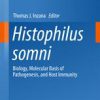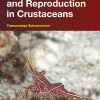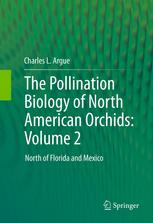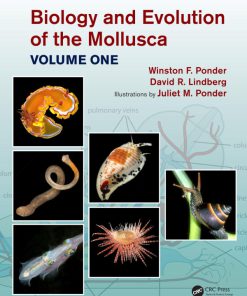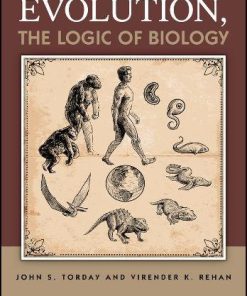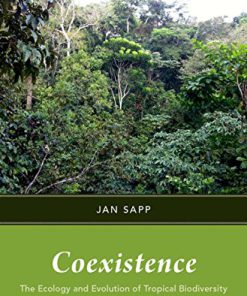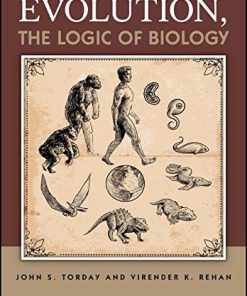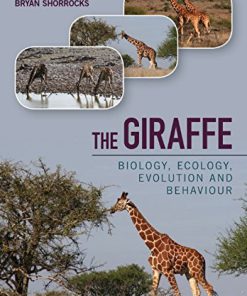Biology and Evolution of the Mollusca Volume 2 1st Edition by Winston Frank Ponder, David Lindberg, Juliet Mary Ponder 1351115230 9781351115230
$50.00 Original price was: $50.00.$25.00Current price is: $25.00.
Biology and Evolution of the Mollusca, Volume 2 1st Edition by Winston Frank Ponder, David R. Lindberg, Juliet Mary Ponder – Ebook PDF Instant Download/DeliveryISBN: 1351115230, 9781351115230
Full download Biology and Evolution of the Mollusca, Volume 2 1st Edition after payment.
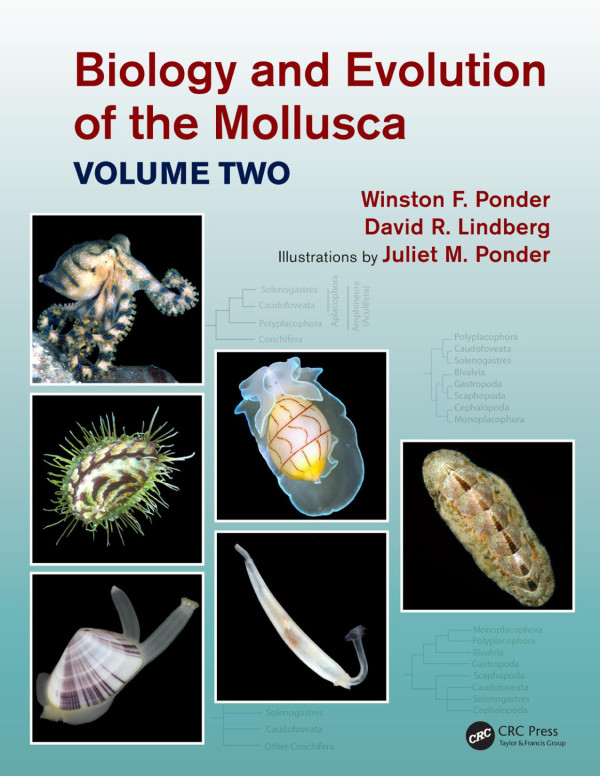
Product details:
ISBN-10 : 1351115230
ISBN-13 : 9781351115230
Author: Winston Frank Ponder, David R. Lindberg, Juliet Mary Ponder
This volume provides individual treatments of the major molluscan taxa. Each chapter provides an overview of the evolution, phylogeny and classification of a group of molluscs, as well as more specific and detailed coverage of their biology (reproduction, feeding and digestion, excretion, respiration etc.), their long fossil record and aspects of their natural history. The book is illustrated with hundreds of colour figures. In both volumes, concepts are summarised in colour-coded illustrations. Key selling features: Comprehensively reviews molluscan biology and evolutionary history Includes a description the anatomy and physiology of anatomical systems Up to date treatment with a comprehensive bibliography Reviews the phylogenetic history of the major molluscan lineages
Biology and Evolution of the Mollusca, Volume 2 1st Table of contents:
Chapter 12 Molluscan Relationships
12.1 The Hypothetical Ancestral Mollusc
12.2 Hypotheses of Phylogenetic Relationships of the Major Molluscan Groups
12.2.1 Aculifera – Conchifera, Testaria, and Serialia Hypotheses
12.2.2 The Search for the Molluscan Sister Group
12.3 Repetition of Organs
12.4 Ano-Pedal Flexure and a Change in Body Orientation
12.5 Reduction and Paedomorphosis
Chapter 13 Early History and Extinct Groups
13.1 Introduction
13.1.1 The First Molluscs?
13.1.2 Shell Morphology
13.1.2.1 Beyond Shell Morphology
13.1.2.2 Muscle Scars
13.1.3 Phylogenetics and Fossils
13.2 Originations, Extinctions, and Recoveries
13.3 The Molluscan Fossil Record
13.3.1 Ediacaran
13.3.2 Cambrian
13.3.2.1 Biomineralisation
13.3.2.2 Taxa
13.3.3 Ordovician
13.3.3.1 Taxa
13.3.4 Silurian
13.3.4.1 Taxa
13.3.5 Devonian
13.3.5.1 Taxa
13.3.6 Carboniferous
13.3.6.1 Taxa
13.3.7 Permian
13.3.7.1 Extinction
13.3.7.2 Taxa
Chapter 14 Polyplacophora, Monoplacophora, and Aplacophorans
14.1 Introduction
14.2 Polyplacophora (Chitons, Placophora, Loricata, Amphineura in Part)
14.2.1 Introduction
14.2.2 Phylogeny and Classification
14.2.2.1 Sister Group Relationships
14.2.3 Morphology
14.2.3.1 Shell and Girdle
14.2.3.2 Head-Foot, Muscles, and Mantle
14.2.3.3 Mantle Groove (Mantle Cavity)
14.2.3.4 Digestive System
14.2.3.5 Renopericardial System
14.2.3.6 Reproductive System
14.2.3.7 Nervous System and Sense Organs
14.2.3.8 Chromosomes
14.2.4 Biology, Ecology, and Behaviour
14.2.4.1 Habits and Habitats
14.2.4.2 Locomotion
14.2.4.3 Feeding and Diet
14.2.4.4 Reproduction, Development, and Growth
14.2.4.5 Associations
14.2.4.6 Predators, Defence, and Behaviour
14.2.5 Diversity and Fossil History
14.3 The Monoplacophora (= Tryblidia, Neopilinida, Tergomya in part)
14.3.1 Introduction
14.3.2 Phylogeny and Classification
14.3.2.1 Sister Group Relationships
14.3.3 Morphology
14.3.3.1 Shell and Protoconch
14.3.3.2 Head-Foot and Mantle
14.3.3.3 Mantle Groove (Mantle Cavity)
14.3.3.4 Digestive System
14.3.3.5 Renopericardial and Reproductive Systems
14.3.3.6 Nervous System and Sense Organs
14.3.4 Biology, Ecology, and Behaviour
14.3.4.1 Habits and Habitats
14.3.4.2 Feeding and Diet
14.3.4.3 Reproduction, Development, and Growth
14.3.4.4 Associations
14.3.4.5 Predation, Defence, and Other Behavioural Attributes
14.3.5 Diversity and Fossil History
14.4 Caudofoveata and Solenogastres: The Aplacophoran Groups
14.4.1 Introduction
14.4.2 Phylogeny and Classification
14.4.3 Morphology
14.4.3.1 Head-Foot and Mantle
14.4.3.2 Digestive System
14.4.3.3 Renopericardial and Reproductive Systems
14.4.3.4 Nervous System
14.4.3.5 Development
14.4.3.6 Habits and Habitats
14.5 Caudofoveata (or Chaetodermomorpha, SCUTopoda)
14.5.1 Introduction
14.5.2 Phylogeny and Classification
14.5.2.1 Sister Group Relationships
14.5.3 Morphology
14.5.3.1 Spicules
14.5.3.2 Head-Foot and Mantle
14.5.3.3 Mantle Cavity
14.5.3.4 Digestive System
14.5.3.5 Renopericardial and Reproductive Systems
14.5.3.6 Nervous System and Sense Organs
14.5.4 Biology, Ecology, and Behaviour
14.5.4.1 Habits and Habitats
14.5.4.2 Feeding and Diet
14.5.4.3 Reproduction, Development, and Growth
14.5.4.4 Associations
14.5.5 Diversity and Fossil History
14.6 Solenogastres (or Neomeniomorpha)
14.6.1 Introduction
14.6.2 Phylogeny and Classification
14.6.2.1 Sister Group Relationships
14.6.3 Morphology
14.6.3.1 Spicules
14.6.3.2 Body
14.6.3.3 Mantle Cavity
14.6.3.4 Digestive System
14.6.3.5 Renopericardial and Reproductive Systems
14.6.3.6 Nervous System and Sense Organs
14.6.4 Biology and Ecology
14.6.4.1 Habits and Habitats
14.6.4.2 Feeding and Diet
14.6.4.3 Reproduction, Development, and Growth
14.6.4.4 Associations
14.6.5 Diversity and Fossil History
Chapter 15 The Bivalvia
15.1 Introduction
15.2 Classification
15.3 Morphology
15.3.1 The Shell
15.3.1.1 Orientation
15.3.1.2 Sculpture
15.3.1.3 Shell Structure
15.3.1.4 Periostracum
15.3.1.5 Ligament
15.3.1.6 Hinge
15.3.1.7 Pallial Line and Sinus
15.3.1.8 Shell Reduction, Accessory Shell Plates, and Secondary Shells
15.3.2 Muscles and Their Scars
15.3.3 The Foot
15.3.4 The Byssus – Structure and Function
15.3.5 Mantle and Siphons
15.3.6 Mantle Cavity
15.3.6.1 The Ctenidia – Their Structure and Ciliation
15.3.6.2 The Labial Palps
15.3.6.3 Other Features of the Mantle Cavity
15.3.7 Digestive System
15.3.8 Renopericardial System
15.3.9 Reproductive System
15.3.10 Nervous System and Sense Organs
15.4 Biology and Ecology
15.4.1 Habits and Habitats
15.4.1.1 Locomotion
15.4.1.2 Attachment
15.4.1.3 Secondary Soft-Bottom Dwellers
15.4.1.4 Burrowers and Borers
15.4.2 Feeding
15.4.3 Life History and Growth
15.4.4 Associations
15.4.4.1 Bacterial and Algal Symbionts
15.4.5 Relationships with Other Animals
15.4.5.1 Predators of Bivalves
15.5 Economic Values
15.6 Diversity and Fossil History
15.6.1 The First Bivalves
15.6.2 The Evolutionary Radiation of Bivalves
15.6.2.1 Freshwater Bivalves
15.6.3 Patterns of Bivalve Diversity
15.7 The Protobranch Bivalves
15.7.1 Phylogeny and Classification
15.7.2 Biology and Ecology
15.7.3 Diversity and Fossil History
15.8 The Autobranch Bivalves
15.8.1 Pteriomorphia
15.8.1.1 Phylogeny and Classification
15.8.1.2 Biology and Ecology
15.8.1.3 Diversity and Fossil History
15.8.2 Heteroconchia
15.8.3 Palaeoheterodonta
15.8.3.1 Trigoniida
15.8.3.2 Unionida
15.8.4 Heterodonta
15.8.4.1 Archiheterodonta
15.8.5 Euheterodonta
15.8.5.1 Phylogeny and Classification
15.8.5.2 Biology and Ecology
15.8.5.3 Diversity and Fossil History
15.8.5.4 The Rudists
15.8.6 Anomalodesmata (= Poromyata)
Chapter 16 The Scaphopoda
16.1 Introduction
16.2 Phylogeny and Classification
16.2.1 Sister Group Relationships
16.3 Morphology
16.3.1 Shell
16.3.2 Head-Foot, Captacula, and Mantle
16.3.3 Mantle Cavity
16.3.4 Digestive System
16.3.5 Renopericardial System
16.3.6 Reproductive System
16.3.7 Nervous System and Sense Organs
16.4 Biology and Ecology
16.4.1 Habits and Habitats
16.4.2 Locomotion
16.4.3 Feeding and Diet
16.4.4 Reproduction, Development, and Growth
16.4.5 Associations
16.4.6 Predation, Defence, and Other Behavioural Attributes
16.5 Diversity and Fossil History
16.5.1 The Major Groups of Scaphopods
16.6 Human Uses
Chapter 17 The Cephalopoda
17.1 Introduction
17.2 Phylogeny and Classification
17.3 Morphology
17.3.1 Shell
17.3.2 Head, Arms, and Funnel
17.3.2.1 Embryological Evidence for the Derivation of Head Structures
17.3.3 Epidermis (Skin)
17.3.4 Head and Funnel Retractor Muscles
17.3.4.1 Muscular Attachments, Shell Growth and the Addition of Septa
17.3.5 The Fossil Record of Soft Tissues
17.3.6 Mantle Wall
17.3.7 Mantle Cavity
17.4 Biology and Ecology
17.4.1 Habits and Habitats
17.4.1.1 The Habits and Habitats of Extinct Ectocochleate Cephalopods
17.4.2 Locomotion and Buoyancy
17.4.2.1 Locomotion
17.4.2.2 Buoyancy
17.4.2.3 The Shell as a Buoyancy Device
17.4.2.4 Other Buoyancy Strategies
17.4.3 The Ink Sac and Inking
17.4.4 Colour Changes – Chromatophores and Other Special Skin Structures
17.4.4.1 Chromatophores
17.4.4.2 Structural Reflectors (Iridophores, Silvery Reflectors, and Leucophores)
17.4.5 Luminescent Organs
17.5 Digestive System
17.5.1 The Jaws
17.5.2 The Radula
17.5.3 Feeding
17.6 Renopericardial System
17.7 Courtship, Reproduction, Development, and Growth
17.7.1 Reproductive System
17.7.1.1 Sexual Characters and Sexual Dimorphism
17.7.2 Courtship and Mating
17.7.3 Life History
17.7.3.1 Spawn and Parental Care
17.7.3.2 Development
17.7.4 The Nervous System, Sense Organs, and Behaviour
17.7.5 The Endocrine System
17.7.6 Learning and Intelligence
17.7.7 Behaviour
17.7.8 Symbiotic Relationships
17.7.9 Predators
17.8 Economic Values
17.9 The Origin of Cephalopods
17.10 Diversity and Fossil History
17.10.1 The Ordovician Radiation and Beyond
17.11 The Major Groups of Cephalopoda
17.11.1 The Nautiliforms
17.11.1.1 Ellesmeroceratia and Plectronoceratia
17.11.1.2 Orthoceratia
17.11.1.3 Discosorida
17.11.1.4 Endoceratia
17.11.1.5 Actinoceratia
17.11.1.6 Nautilia
17.12 Bactrita and Ammonitia (= Ammonoidea)
17.12.1 Bactrita (= Bactritoidea)
17.12.2 Ammonitia (Ammonites)
17.12.2.1 The Embryonic Shell (Ammonitella)
17.12.2.2 Ammonite Sutural Patterns
17.12.2.3 Life Habits
17.12.2.4 Aptychus and Jaws
17.12.2.5 Phylogeny, Classification, Diversity, and Fossil History of Ammonites
17.12.2.6 The Major Groups of Ammonites
17.13 Coleoida
17.13.1 Phylogeny, Classification, Diversity, and Fossil History
17.13.1.1 Belemnitidia (The Belemnites)
17.13.1.2 Decabrachia
17.13.1.3 Squid – A Grade Not a Clade – The Myopsida, Oegopsida, Bathyteuthoidea (‘Teuthida’)
17.13.1.4 Octobrachia (= Octopodiformes)
17.13.1.5 Giant Squid and Octopuses
Chapter 18 Gastropoda I – Introduction and the Stem Groups
18.1 Introduction to the Gastropoda
18.1.1 Phylogeny and Classification
18.1.2 Morphology
18.1.2.1 Shell, Operculum and External Body
18.1.2.2 Shell Muscles
18.1.2.3 Operculum
18.1.2.4 Head-Foot
18.1.2.5 Mantle Cavity and Its Organs
18.1.2.6 Digestive System
18.1.2.7 Renopericardial System
18.1.2.8 Reproductive System
18.1.2.9 Nervous System and Sense Organs
18.1.3 Biology, Ecology, and Behaviour
18.1.3.1 Habits and Habitats
18.1.3.2 Locomotion and Behaviour
18.1.3.3 Life History
18.1.3.4 Feeding
18.1.3.5 Associations
18.1.4 Economic Values
18.1.5 Diversity and Fossil History
18.2 The Initial Radiation – Eogastropods and Orthogastropods
18.2.1 Hypothetical Reconstructions
18.2.1.1 A Hypothetical Ancestral Gastropod
18.2.1.2 Eogastropoda
18.2.1.3 Orthogastropoda
18.3 The Lower Groups of Gastropods
18.4 Patellogastropoda (= Docoglossa, Cyclobranchia, Eogastropoda in Part)
18.4.1 Introduction
18.4.2 Phylogeny and Classification
18.4.2.1 Sister Group Relationships
18.4.2.2 Outline of Classification
18.4.3 Morphology
18.4.3.1 Shell and Protoconch
18.4.3.2 Head-Foot, Mantle, and Operculum
18.4.3.3 Mantle Cavity
18.4.3.4 Digestive System
18.4.3.5 Reproductive System
18.4.3.6 Renopericardial System
18.4.3.7 Nervous System and Sense Organs
18.4.4 Biology, Ecology, and Behaviour
18.4.4.1 Habits and Habitats
18.4.4.2 Locomotion and Behaviour
18.4.4.3 Life History
18.4.4.4 Feeding and Diet
18.4.4.5 Associations
18.4.5 Diversity and Fossil History
18.5 Vetigastropoda
18.5.1 Introduction
18.5.2 Phylogeny and Classification
18.5.2.1 Outline of Classification
18.5.2.2 Deep-Sea Enigmas; The Neomphaloidean and Cocculinoidean Taxa
18.5.3 Morphology
18.5.3.1 Shell and Protoconch
18.5.3.2 Head-Foot, Mantle, Operculum, and Locomotion
18.5.3.3 Mantle Cavity
18.5.3.4 Digestive System
18.5.3.5 Reproductive System
18.5.3.6 Renopericardial System
18.5.3.7 Nervous System and Sense Organs
18.5.4 Biology, Ecology, and Behaviour
18.5.4.1 Habits and Habitats
18.5.4.2 Feeding and Diet
18.5.4.3 Life History
18.5.4.4 Associations
18.5.4.5 Behaviour
18.5.5 Diversity and Fossil History
18.6 Neritimorpha (= Neritopsina)
18.6.1 Introduction
18.6.2 Phylogeny and Classification
18.6.2.1 Sister Group Relationships
18.6.2.2 Outline of Classification
18.6.3 Morphology
18.6.3.1 Shell and Protoconch
18.6.3.2 Head-Foot, Mantle, Operculum, and Locomotion
18.6.3.3 Mantle Cavity
18.6.3.4 Digestive System
18.6.3.5 Renopericardial System
18.6.3.6 Reproductive System
18.6.3.7 Nervous System and Sense Organs
18.6.4 Biology and Ecology
18.6.4.1 Habits and Habitats
18.6.4.2 Feeding and Diet
18.6.4.3 Life History
18.6.4.4 Associations
18.6.4.5 Behaviour
18.6.5 Diversity and Fossil History
Chapter 19 Gastropoda II – The Caenogastropoda
19.1 Introduction
19.2 Phylogeny and Classification
19.2.1 Sister Group Relationships
19.2.2 Outline of Classification
19.3 Morphology
19.3.1 Shell and Protoconch
19.3.2 Head-Foot, Mantle, and Operculum
19.3.2.1 Head Structures
19.3.2.2 The Foot
19.3.2.3 The Operculum
19.3.2.4 Mantle Edge
19.3.3 Mantle Cavity
19.3.4 Digestive System
19.3.5 Renopericardial System
19.3.6 Reproductive System
19.3.6.1 The Female System
19.3.6.2 The Male System
19.3.7 Nervous System and Sense Organs
19.4 Biology, Ecology, and Behaviour
19.4.1 Habits and Habitats
19.4.2 Locomotion
19.4.3 Feeding and Diet
19.4.4 Life History and Growth
19.4.4.1 Spawn, Development, and Larvae
19.4.5 Associations
19.4.5.1 The Evolution of Parasitism in Eulimidae
19.4.6 Predators and Defence
19.4.7 Other Behavioural Attributes
19.5 Economic and Ecological Values
19.6 Diversity and Fossil History
19.7 Major Groups within Caenogastropoda
19.7.1 The Architaenioglossans
19.7.1.1 Campanilida
19.7.2 Sorbeoconcha
19.7.2.1 Cerithiimorpha
19.7.2.2 Hypsogastropoda
Chapter 20 Gastropoda III – The Heterobranchia
20.1 Introduction
20.2 Phylogeny and Classification
20.2.1 Sister Group Relationships
20.2.2 Chromosome Numbers
20.3 Morphology
20.3.1 Shell and Operculum
20.3.1.1 Shell Structure
20.3.1.2 Larval or Embryonic Shell
20.3.1.3 Shell Reduction and Loss
20.3.1.4 Shell Variation
20.3.1.5 Operculum
20.3.2 External Body Morphology
20.3.2.1 Head Tentacles
20.3.2.2 Cephalic (Head) Shield
20.3.2.3 Epithelial Modifications
20.3.2.4 Oral Veil
20.3.2.5 The Foot, Pedal Glands, and Parapodia
20.3.2.6 The Mantle
20.3.3 Mantle Cavity and Associated Structures
20.3.3.1 Heterobranch Gills
20.3.3.2 Opposed Ciliary Ridges (Raphes) and Mantle Tentacles
20.3.3.3 The Hypobranchial Gland
20.3.3.4 The Pigmented Mantle Organ (PMO)
20.3.3.5 Other Glands Associated with the Mantle Cavity
20.3.4 Digestive System
20.3.5 The Renopericardial System
20.3.6 Nervous System and Sense Organs
20.3.6.1 Sense Organs
20.3.7 Reproductive System
20.3.7.1 Terminology
20.3.7.2 The Ovotestis and Gametes
20.3.7.3 The Reproductive System of ‘Lower Heterobranchs’
20.3.7.4 Some Small Euthyneurans Previously Thought to Be Lower Heterobranchs
20.3.7.5 Euthyneuran Reproductive Systems
20.4 Biology, Ecology, and Behaviour
20.4.1 Habits and Habitats
20.4.2 Locomotion
20.4.3 Food and Feeding
20.4.3.1 Herbivory
20.4.3.2 Fungivory
20.4.3.3 Active Carnivory
20.4.3.4 Parasitism
20.4.3.5 Suspension Feeding
20.4.3.6 Coprophagy
20.4.4 Reproduction, Development, and Growth
20.4.4.1 Self-Fertilisation
20.4.4.2 Hypodermic Insemination
20.4.4.3 Aphally
20.4.4.4 Asexual Reproduction
20.4.4.5 Life Cycles
20.4.4.6 Reproductive Behaviour
20.4.4.7 Development
20.4.4.8 Spawn
20.4.4.9 Larvae and Larval Shells
20.4.5 Behaviour
20.4.6 Predation and Defence
20.4.6.1 The Shell as a Means of Defence
20.4.6.2 Mucus
20.4.6.3 Defence without a Shell
20.4.6.4 Use of Nematocysts
20.4.6.5 Aposematic (Warning) Colouration and Batesian and Müllerian Mimicry
20.4.6.6 Autotomy
20.4.6.7 Predators of Heterobranchs
20.4.7 Associations
20.4.8 Economic and Ecological Values
20.5 Diversity and Fossil History
20.5.1 Major Groups within the Heterobranchia
20.5.1.1 ‘Lower Heterobranchs’
20.5.1.2 Euthyneura
Chapter 21 Molluscan Research – Present and Future Directions
21.1 Molluscan Research Publications
21.1.1 Provision of Basic Information
21.1.1.1 Use of Museum Collections
21.1.1.2 Research Workshops
21.1.1.3 DNA Barcoding
21.1.1.4 Genetics
21.2 Palaeobiology
21.3 Taphonomy
21.4 Systematics
21.5 Systematic, Phylogenetic, and Evolutionary Studies
21.5.1 Different Datasets
21.5.1.1 Molecular Datasets
21.6 Biogeography
21.7 Discovery
21.8 The Future
21.8.1 Text Mining
21.8.2 New Technology
21.8.3 Phylogenetic and Evolutionary Research
21.8.4 Biodiversity
21.8.5 Citizen Science
People also search for Biology and Evolution of the Mollusca, Volume 2 1st:
molluscs evolution
mollusca evolution
mollusk biology
evolution of molluscs
evolution of molluscs shell
Tags: Biology, Evolution, the Mollusca, Winston Frank Ponder, David Lindberg, Juliet Mary Ponder
You may also like…
Romance - Contemporary Romance
Broken Girl Neighpalm Industries Collective 2 1st Edition Lexie Winston
Science (General)
Biology and other natural sciences
Biology and Evolution of the Mollusca, Volume 1 1st Edition Winston Frank Ponder (Author)
Science (General)
Biology and other natural sciences
Coexistence : the ecology and evolution of tropical biology 1st Edition Sapp
Science (General)
Science (General)
Synthetic biology Volume 2 1st Edition Maxim 1788014057 9781788014052
Cookbooks


